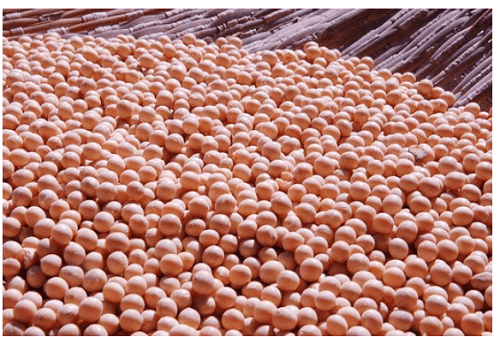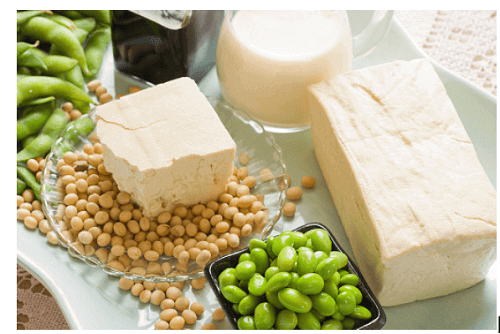All You Need to Know About Soy

Soy
In today’s information-overload world, it can be hard to cut through the noise and get to the truth. With so much conflicting information, it’s hard to know what’s real and what isn’t.
With that in mind, here are some facts about soy that you can trust. After all, they come from the source of soy itself! Soy is a popular food for many reasons, with its numerous benefits making it stand out among other protein sources.
Let us take you through some interesting soy facts and help you understand why this superfood is so good for you.
What is soy?
Soy is the world’s most widely produced food. It is made from the beans of a plant native to East Asia. These beans are harvested, dried, and pressed to extract soybean oil. The remainder of the ingredients is made into various foods, including tofu, soy milk, miso, soy sauce, and soy protein isolate.

Soy foods have been a part of the human diet for thousands of years, with the earliest record of soy consumption dating back to the Han dynasty, which reigned from 206 B.C. to A.D. 220. The soybean plant was initially cultivated for its edible roots.
It wasn’t until later that the bean was also discovered to be edible. The Chinese began to cultivate soybeans around 4000 B.C., making this legume one of the first crops ever cultivated by humans. Today soy is grown on a large scale in Brazil, the USA, and Argentina, with the US soy being the most trusted and sustainable brand of soy.
Why should you eat soy?
Soy is a legume eaten in Asia for centuries. It is a protein-rich food and a good source of vitamins and minerals. Many types of soy are available, each with its unique flavor and nutritional value.

Most soy is low in sodium, fat-free, cholesterol-free, and a good source of protein. It provides about 9 grams of protein per 1/2 cup serving. It’s an excellent source of iron, magnesium, calcium, Vitamin E, and B vitamins.
Soy has been linked with many benefits, including reduced heart disease, cancer, and diabetes risk. Soy foods may also help to reduce the symptoms of menopause, improve bone health, and reduce menopausal hot flashes.
Where to get your soy?
First, make sure you’re eating real soy. Check ingredient labels to ensure that soybean is among the top ingredients. If you’re eating real soy, be sure that it’s fermented. You can find soy in many forms, including tofu, edamame, tempeh, soy milk, and soy protein isolate.
Tofu is made from curdled soy milk and is a common addition to Asian dishes like stir-fries, soups, and stews. Soy milk is made from ground soybeans, water, and sometimes other ingredients like grains, seeds, or dried fruit. It makes many Asian drinks like iced lattes, hot chocolate, and horchata.

Tempeh is a fermented soy product high in protein and fiber. It can be enjoyed in various ways, including stews, salads, and sandwiches. Soy protein isolate is a powdered ingredient commonly used to make protein bars.
Soy is a great source of protein
It’s true! Soy contains all nine essential amino acids, making it a complete protein. This makes it a great meat alternative for vegetarians or vegans. It’s also a great source of fiber, iron, zinc, and B vitamins.
A single serving of soybeans contains about 15 grams of protein, making it an excellent plant-based source of protein for vegans. Soy milk has about 7 grams of protein per serving, making it a good source of protein for vegetarians.
Soy has anti-inflammatory properties
Soy’s anti-inflammatory properties are due to isoflavones – a type of phytoestrogen. These are known to help lower cholesterol and reduce the risk of heart disease. They are also believed to reduce the risk of certain types of cancer, such as prostate cancer in men and breast cancer in women.
Consuming soy and soy products can also help to ease symptoms associated with menopause, such as hot flashes.
Nutrition facts for Soy Foods
When looking at the nutrition facts for soy foods, remember that unfermented soy products are high in phytic acid. Phytate is an essential substance for growing plants. It is also a natural inhibitor of your body’s ability to absorb nutrients such as iron, zinc, and calcium.
The good news is that fermentation significantly reduces the amount of phytate in soy. As a result, fermented soy products are excellent sources of many essential nutrients, including protein, B vitamins, iron, zinc, and calcium.
Environmental benefits of soy
Soybean has various environmental benefits, including improving soil conditions. When soybeans grow, part of their root system penetrates the soil to access nutrients it uses to grow.
It also leaves those nutrients in the soil for the next plant that grows in that area. This natural process is called “positive nitrogen fixation.” It allows soybeans to create fertilizer, making it an environmentally friendly plant.
Regarding land use and water consumption, soybean requires less land and water to produce compared to animal rearing for protein production. Soybeans also emit fewer greenhouse gases (about 90% less) compared to the production of animal protein sources.
Conclusion
Soy has been a part of the human diet for thousands of years. It has been credited with improving the health of many Asian cultures and has become popular in Western culture. Soy is a healthy alternative to many meat-based protein sources. It’s high in amino acids, fiber, and vitamins. Generally, soy can be enjoyed as part of a healthy diet and lifestyle.







